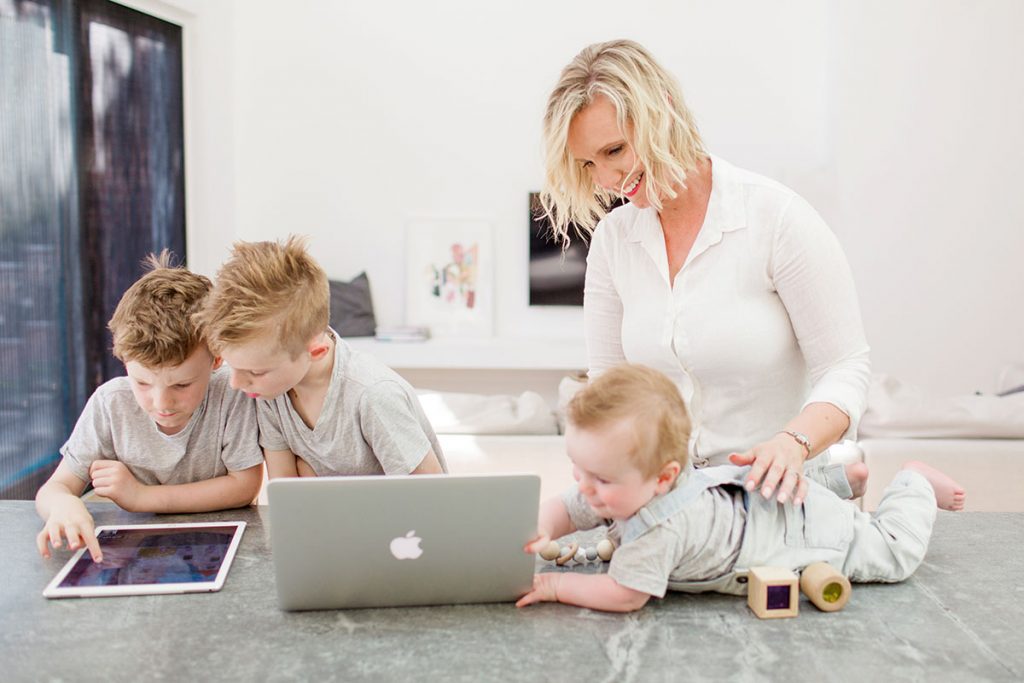By Dr Kristy Goodwin
While the digital world has long been a part of family life, the pandemic launched us into a completely new world in terms of what we were doing online on a daily basis. All of a sudden we were shopping, studying, working, watching movies and catching up with friends and family – all online.
Whilst many parents have long worried about screen time, the pandemic forced many parents to consider the positive and powerful impact it can have in children’s lives. It has also nudged parents to closely consider the role that technology plays in their family’s life and develop some healthy digital habits.
Research conducted by the Royal Children’s Hospital Melbourne identified time spent on screens and digital media as the most frequently reported change in children’s lifestyle during the pandemic .
The research found that 51% of children, according to their families, have spent more time on screens for entertainment during the pandemic, excluding time required for learning and remote education.
A pleasing finding from the study and one echoed by many parents, is that they felt their child’s digital media use was overall a positive experience during the pandemic, as 76% of parents in the Child Health Poll indicated that their technology habits were positive. Furthermore 75% of parents reported that digital devices facilitated remote learning and were a critical tool in allowing children to connect with their family and friends. Pleasingly, 67% of parents suggested that their child had developed new digital skills during the pandemic. This data confirms that, when used appropriately and in intentional ways, digital media can support children’s learning and development.
The pandemic prompted many families to use digital technologies together. This is referred to as ‘joint media engagement’ and the research indicates that children learn far more from digital devices when interacting and engaging with others (be that a parent, sibling, or peer). Another pandemic trend is that digital experiences can be a catalyst to connect. Families have used extended time spent at home, to game together, share digital books, and take photos together.
Increased family connectedness can be facilitated by well-designed digital tools that support joint media engagement. The Applaydu app is a prime example of an app that encourages kids and parents to interact together.
In Applaydu children can bring toys to life in their physical, analogue world using the augmented reality feature. There are also ‘family moments’ built into each activity within the Applaydu app designed to encourage families to play together.
Many families have incorporated gaming apps and gamification into their daily routines since the pandemic. Gamification can facilitate bonding between children and parents and also amongst siblings, as the technology can be the conduit for play and interactions. Gamification can also inject some fun into mundane and repetitive tasks like daily routines. This is something that many families needed, to get through the pandemic and extended lockdowns.
Practical tips for balancing screen time within kids’ routines
Focus on WHAT your child is doing on digital devices, rather than HOW MUCH TIME they’re spending online. Look for quality, age-appropriate content, games and apps that support play and/or learning and encourage joint-media engagement. Seek educational activities that involve active participation, rather than passive consumption.
Play and engage WITH your kids. Kids learn far more when they use technology with an adult or caregiver (sibling or peer even). Look for opportunities to use digital media with your kids.
Balance their SCREEN TIME with ‘GREEN TIME’. Time outdoors is vital for their physical health and psychological wellbeing. Research confirms that kids need at least 2 hours/day in natural sunlight to help with their eye health (to offset myopic progression) and to support their sleep hygiene (sunlight helps to regulate their circadian rhythm).
Establish DIGITAL RULES and EXPECTATIONS WITH (not ON) your kids. Clearly determine what, when, where, how, how long and with whom your kids can use technology. Clearly articulating your digital borders and boundaries can help avoid kids having dreaded ‘techno-tantrums’ as the limits and expectations are clearly defined.
Use screen time as a SPRINGBOARD for off-screen, analogue experiences. Can the characters from an online book be re-created as a puppet show or in an artwork? Can you gamify your morning or evening routine?
Technology plays a pivotal role in our kids’ lives and will continue to do so in the future. As parents, we need to find healthy and helpful ways for them to use technology. Doing so will not only support their development and learning, but will help them to establish healthy and sustainable digital habits and behaviours that will last a lifetime.
Dr. Goodwin is an award-winning researcher, speaker, author, and mum on a mission to help parents and educators raise happy, healthy children who thrive online and offline. She recently teamed up with Kinder to celebrate the launch of its free edutainment app, Applaydu and offer advice for families navigating digital wellbeing.

